• Building a more specific look at a popular metric in yards per target: When adjusting for depth of target, field position and alignment, how does this year’s tight end class improve (or not) upon their actual yards per target metric?
• The Brock Bowers show continues: The 2024 Georgia tight end prospect continues to build his case as one of the best prospects of all time for his position.
• Try PFF's Mock Draft Simulator: You can trade picks and players and draft for your favorite NFL team.
Estimated Reading Time: 9 minutes
Click here for more draft tools:
2024 Mock Draft Simulator | 2024 Big Board | 2024 Draft Guide
2024 Player Profiles | 2024 Mock Drafts | NCAA Premium Stats
Yards per target (YPT) is a popular metric used in receiver evaluation to determine how efficient each player has been with their opportunities, and while it’s not as strong as yards per route run, it can be an effective way to evaluate how efficient players were with their targets.
Yards per target over expectation (YPTOE), also known as depth-adjusted yards per target, is a metric where full credit goes to FantasyPoints.com‘s Scott Barrett, who discovered a much better correlation year-over-year than just using actual yards per target. Scott’s work on this subject can be found here. Earlier this week, the 2024 wide receiver class was put under the lens of this metric, which can be found here.
It’s worth noting that not one metric should be used to evaluate an individual player but instead be used as a single piece to a much larger puzzle, which when combined with other key metrics, helps deliver a clearer evaluation of each prospect. Thanks to Scott’s earlier work in determining a stronger correlation than actual yards per target, YPTOE can be used as one of those puzzle pieces.
Referencing Scott’s work and PFF’s expansive database, we can utilize multiple key isolating factors in order to calculate the YPTOE for this year’s rookie tight end class in order to find a clearer representation of how effective each tight end has been with their opportunities.
- The first factor is field position of the tight end’s offense. The reason for this is that the further away from the opposing endzone an offense is, the more potential receiving yardage there is to gain per target, and the closer the offense is to the opposing endzone, there is less receiving yardage to gain per target. This helps level the yards per target more for those who saw a much higher percentage of red zone targets, for example, with averages highlighted below.
| Field Position | Average Yards per Target |
| Own half (1-50) | 9.1 |
| Opponent’s 49-21 | 9.1 |
| Opponent’s 20-11 | 6.3 |
| Opponent’s 10-5 | 3.2 |
| Opponent’s 4-goalline | 1.6 |
- Another factor taken into account was the actual depth of each individual target at various points on the field. The reason for this is that depending on the depth of target, whether it’s behind the line of scrimmage, the intermediate areas of the field, or deep, the target depth changes the amount of yardage that target is potentially worth, as highlighted below.
| Depth of Target | Average Yards per Target |
| Behind line of scrimmage ADoT | 4.4 |
| 1-5 ADoT | 4.8 |
| 6-10 ADoT | 5.7 |
| 11-15 ADoT | 6.3 |
| 16-19 ADoT | 7.8 |
| 20+ ADoT | 10.8 |
- The last key factor taken into account combines both of the above factors to where the tight end lined up within the team’s offensive formation. Whether it was wide, in the slot, in-line, or in the backfield, there was a difference, albeit slighter, on expected yardage per target as well.
Leaders in actual yards per target
Before diving into how each 2024 rookie tight end’s career yards per target changed after using the YPTOE formula, this is where they stand as far as their actual yards per target.
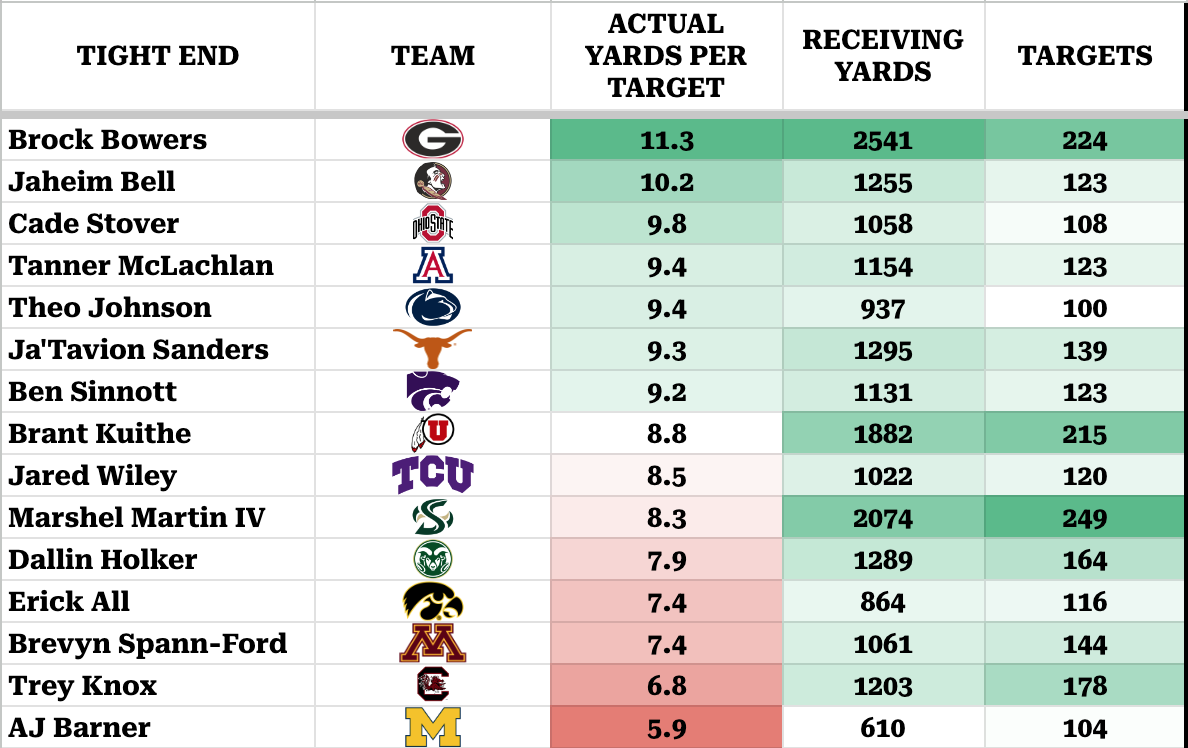
- Spoilers for the rest of this article, but Brock Bowers’ name is going to come up a lot. He is the lone (expected) first-round tight end in this year’s class, leading the group in career yards per target and career receiving yards. His actual yards per target is a much higher mark than the next closest tight end in Jaheim Bell, and there’s a chance that gap increases further once applying the depth-adjusted YPTOE formula.
- Bell is trending toward being a Day 3 pick in this year’s class, though he shouldn’t be ignored, as he owns some very encouraging metrics for his career. An example is his career yards per route run (2.31) ranking among the 89th percentile for tight end prospects since 2018.
Leaders in yards per target over expectation
Once applying the formula to the entire draft class for their careers, this is how each tight end fared in terms of YPTOE, ranked from best to worst over expectations. Unlike the wide receivers, previously covered here, there isn’t as much of a shakeup from actual YPT rank to YPTOE rank.
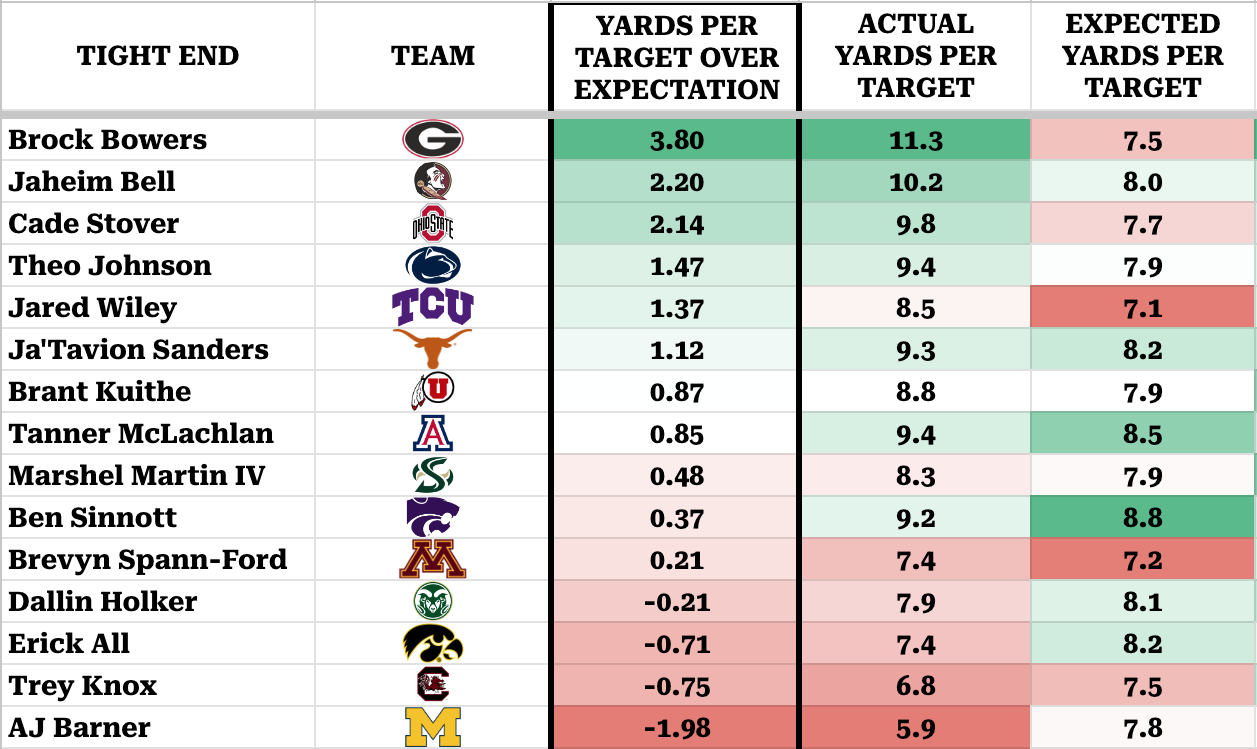
- As expected, Bowers created even more of a gap between himself and the rest of this year’s class, delivering a deviation so high that not even the 2024 wide receivers delivered over expectations as much as Bowers has for his career so far. Bowers is going to need comparisons to a larger group of tight ends to put his dominance in perspective (keep reading).
- Jaheim Bell, Cade Stover, and Theo Johnson all remain among the top-five tight ends in this year’s class.
- TCU’s Jared Wiley increased his rank from ninth in actual yards per target to fifth in yards per target over expectations.
- Arizona’s Tanner McLachlan dropped from fourth in yards per target to eighth in yards per target over expectations.
- Kansas State’s Ben Sinnott — the fifth-ranked tight end on the PFF big board — goes from seventh in yards per target to 10th in yards per target over expectations.
Leaders in yards per target among past first- and second-round tight ends since 2017
Adding all of the past first and second-round tight ends drafted since 2017 and including this year’s (expected) first and second-rounders (highlighted) is a better comparable than just a single draft class.
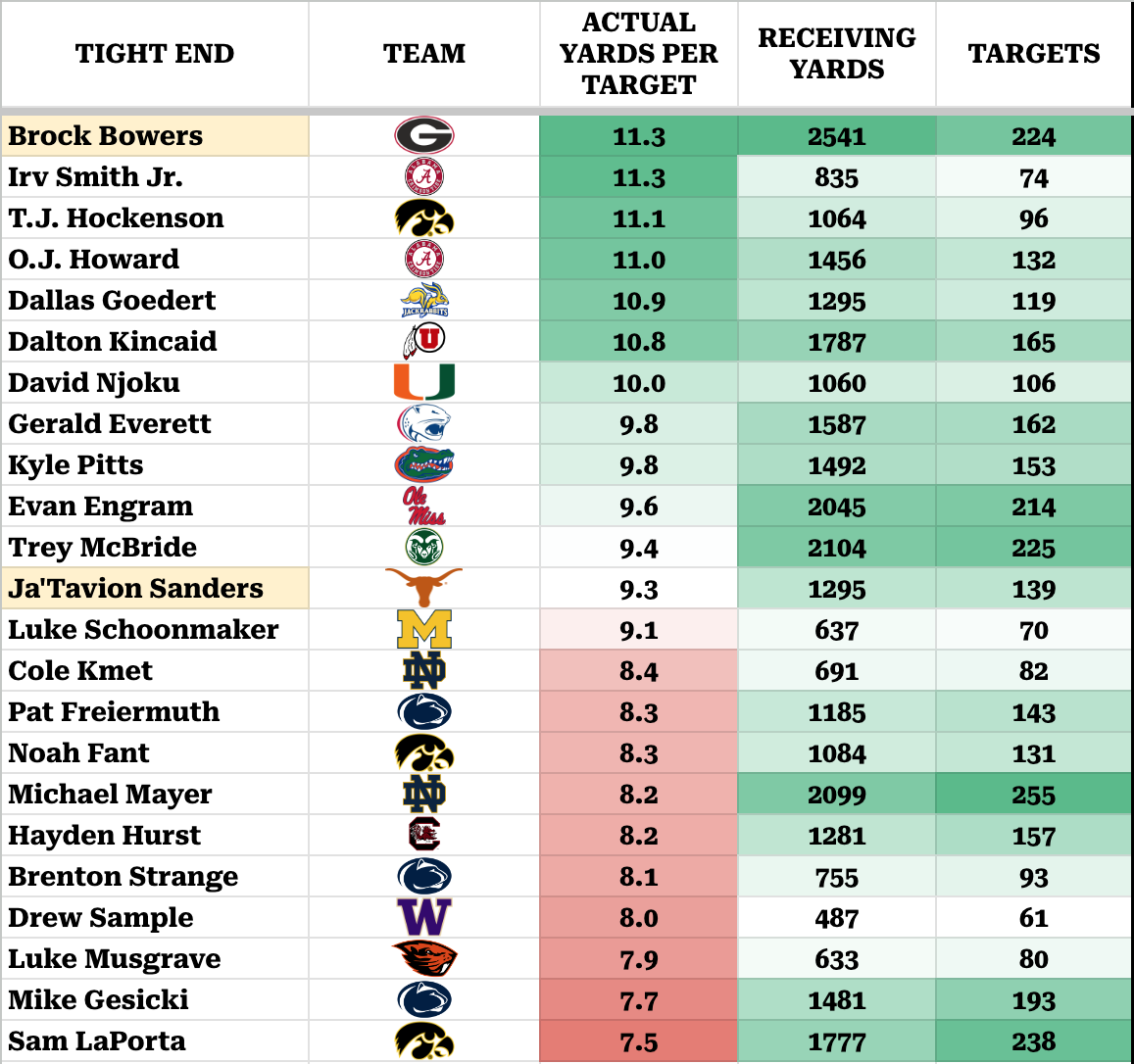
- Bowers sits at the top once again but with much closer competition in terms of actual yards per target, even tying with 2019’s Irv Smith Jr. We’ll see if he can separate himself in the same way that he did his 2024 class once the YPTOE formula is brought into the equation.
- 2019’s T.J. Hockenson and 2017’s O.J. Howard, who were both first-round picks in their respective drafts, don’t trail Bowers by too much either when using straight-forward yards per target.
- Ja’Tavion Sanders — a potential Day 2 pick in this year’s draft and the second-ranked tight end on the PFF big board — sits amongst many former second-round picks in terms of actual yards per target.
- Kyle Pitts — one of the other highly touted prospects in recent years — had many other redeeming metrics that were 90th percentile and above among prospects, but yards per target were not one of them, ranking among the 76th percentile since 2017.
- Sam LaPorta, who just put up the best rookie season ever by a tight end in the NFL, is at the bottom of this list which can point to the importance of not using one single metric to evaluate players. However, it also has to do with LaPorta having good but not amazing career college metrics to begin with and points to the importance of utilizing as many evaluation tools as possible before forming a conclusive opinion on a prospect.
Leaders in yards per target among past first- and second-round tight ends since 2017
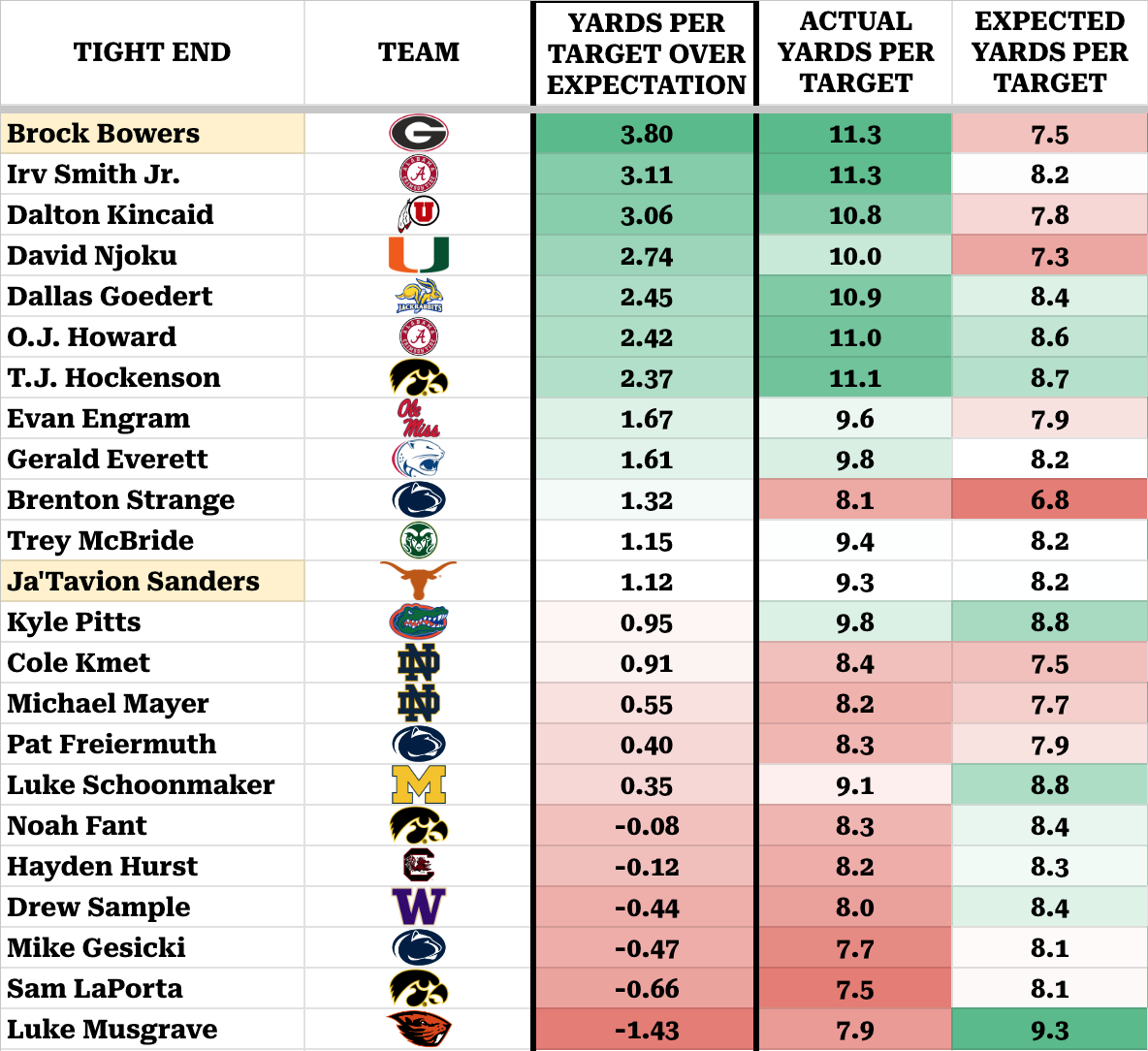
Finally, here is how all tight end prospects taken in the first two rounds of the draft, as well as this year’s expected first and second-rounders fared when applying the YPTOE formula.
- Not only does Bowers stand tall over the rest of the group once again, but his total over expectations created that much more separation between him and the top tight end prospects of years past. On top of Bowers’ many other analytical strengths (highlighted here), this only helps solidify him as one of the best tight end prospects in recent years.
- Again, this is just one piece of the puzzle to consider when evaluating prospects, but more context is often better for certain popular metrics such as yards per target, and in Bowers’ case, there aren’t many metrics that don’t help solidify him as an elite prospect.
- Side note: Mark Andrews is not listed here since he was a third-rounder, but if included, for those interested, he ranked seventh among this group in actual yards per target (10.6) and improved to the fifth-best mark in YPTOE (2.53).
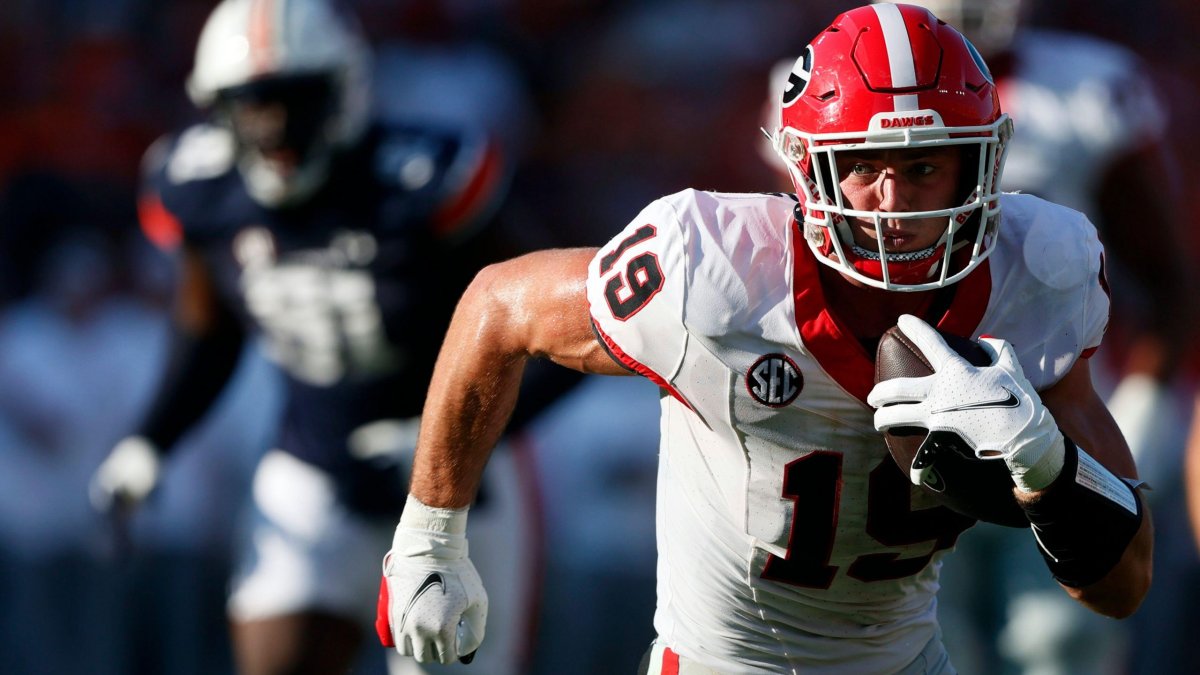


 © 2025 PFF - all rights reserved.
© 2025 PFF - all rights reserved.